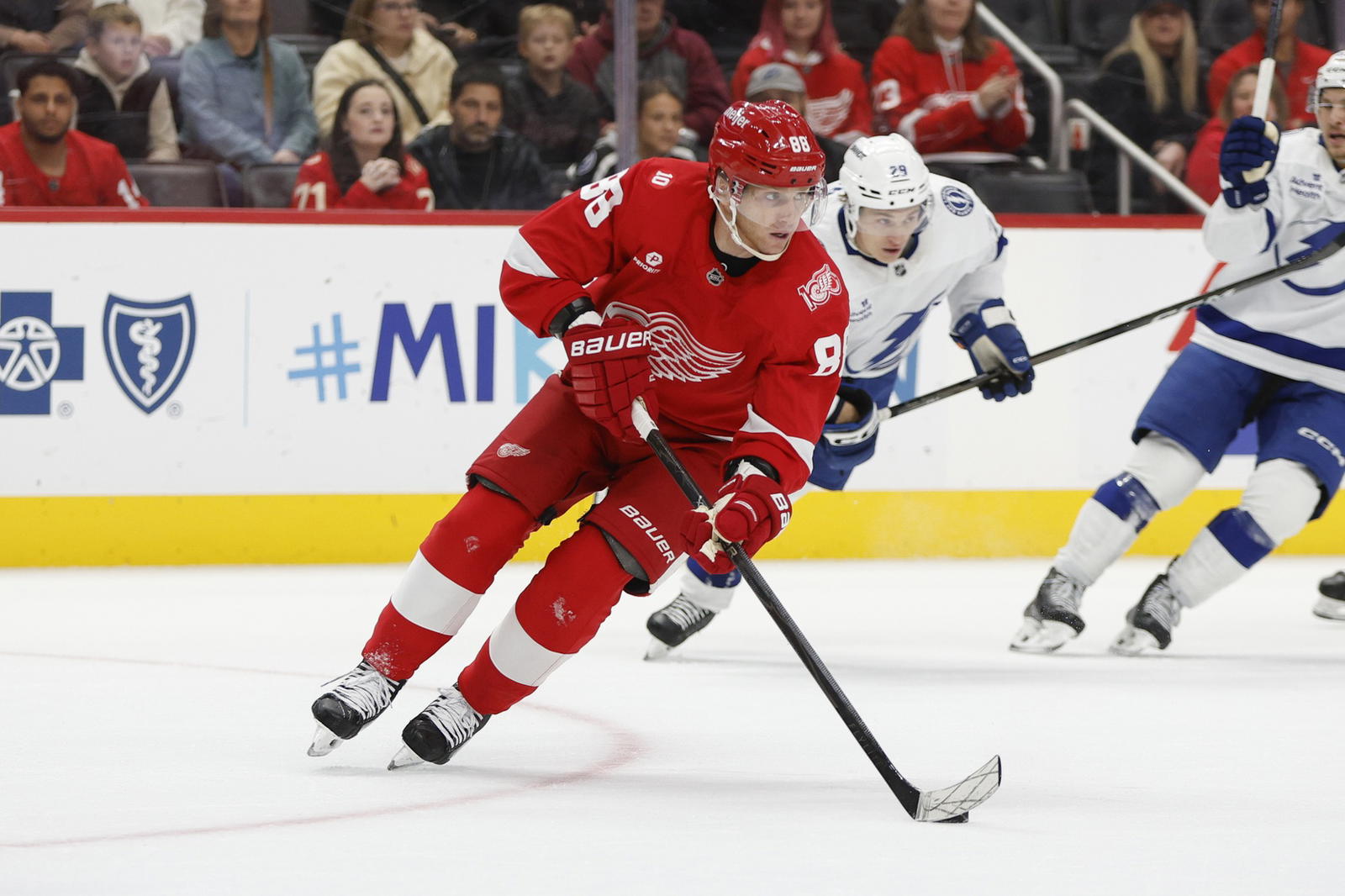Patrick Kane’s Availability Clarified as Red Wings Continue Road Trip
The Detroit Red Wings have been without forward Patrick Kane since he suffered an upper-body injury during their 2-1 overtime victory over the Tampa Bay Lightning on Oct. 17.

Shortly before Dylan Larkin's overtime game-winning goal, Kane slid awkwardly into the boards behind the net and skated slowly back to the bench favoring his shoulder.
He had officially been designated as day-to-day by head coach Todd McLellan, though he's been able to skate.
While there was hope that Kane would be able to join the Red WIngs at some point on their five-game road swing which continues with a Sunday evening tilt against the San Jose Sharks, that hope has now been dashed.
Per Max Bultman of The Athletic, who is on the trip with the club, Kane will not be available for the duration of the road swing.
No, he will not join Red Wings on this trip
Any news on kane is he playing tonight
Following their contest against the Sharks, the Red Wings have one game remaining on the road on Tuesday evening against the Vegas Golden Knights before they return home to play the New York Rangers on Nov. 7.
Just as he did last season, Kane had been playing on Detroit's second line combination with Alex DeBrincat and Marco Kasper.
With three goals and two assists in the five games that he's appeared in, Kane had been producing at a point-per-game pace.
Blackhawks have progressed to learning next-level details of Jeff Blashill's defensive system

SEATTLE — Coach Jeff Blashill’s aggressive defensive system appears to be working relatively well for the Blackhawks.
They rank 12th in the NHL in goals allowed per minute during five-on-five play, although Spencer Knight’s excellent goaltending has contributed to that stat.

In terms of expected goals allowed, they rank 21st, but even that ranking is much improved compared to the last few seasons. Their analytics are less atrocious across the board, according to Natural Stat Trick, plus they’re improving over time.
The Hawks’ system encourages their defensemen to follow their marks and pressure the puck toward the perimeter of the defensive zone to try to kill plays quickly. It subsequently puts pressure on everyone — defensemen and forwards alike — to box out effectively because there’s less team support in the interior of the zone and around the net.
The Hawks have done a good job of boxing out, giving Knight clean sight lines to make saves. They’ve blocked only 25.4% of opponent shots, and that’s largely intentional; they want to reduce traffic wearing any color.
Now that they’ve gotten accustomed to the basic tenets of the system, Blashill has shifted toward coaching and explaining next-level intricacies. There’s still a ways to go until they master it completely.
“You can’t teach every little detail in a system right away,” Blashill said recently. “You give the main version of it, and then you start to teach the details within it as you go. That’s what we’ve tried to do. Part of it is just repetition. We try it in practice, get those reps, [get more] repetition in games and then guys get more comfortable with it.”
That’s true in all areas, not only the defensive zone. The Hawks have dived into greater detail about plays at both blue lines, forechecking strategies, penalty-kill entry defense and all sorts of other things. On Sunday, they practiced setting up below the goal line on five-on-three power plays — a trendy thing.
In the defensive zone specifically, though, a critical detail they’ve worked on involves cutting the zone in half vertically. That requires not only blocking lanes for always-dangerous seam passes but also cutting off pucks rimmed around the boards before they make it to the opposite corner.
To do that, Hawks wingers must pressure the opposing defensemen at the point, block their shooting lanes and angle them in such a way that their only option is to rim the puck down low.
“[We need to] find where the puck is and get our body or stick in the lane where it makes him uncomfortable to shoot,” forward Colton Dach said. “You have to have a good angle, as well. If you go straight at him, he could make the play around you. But you’ve just got to find a way to make him force the puck low.”
If a Hawks defenseman has his eyes up and can recognize and anticipate that’s about to happen, he can stop boxing out — leaving his man in front of the net — and jump the play, so he reaches the puck first behind the net. Blashill calls it “cutting the bottom off.”
Then he can send the puck back toward the side it came from or, if he has enough time, orchestrate a breakout by looking for a tape-to-tape pass.
“That’s the next progression to allow us to play less D-zone and put the puck in the forwards’ hands, which is where we have a lot of speed and skill,” defenseman Matt Grzelcyk said.
“That’s a tough balance as a D-man, [deciding] when to box out or when to jump off your check a second early. But we watched some clips [Thursday about] understanding when the puck is at the point, maybe just take a look — more than you would.”





